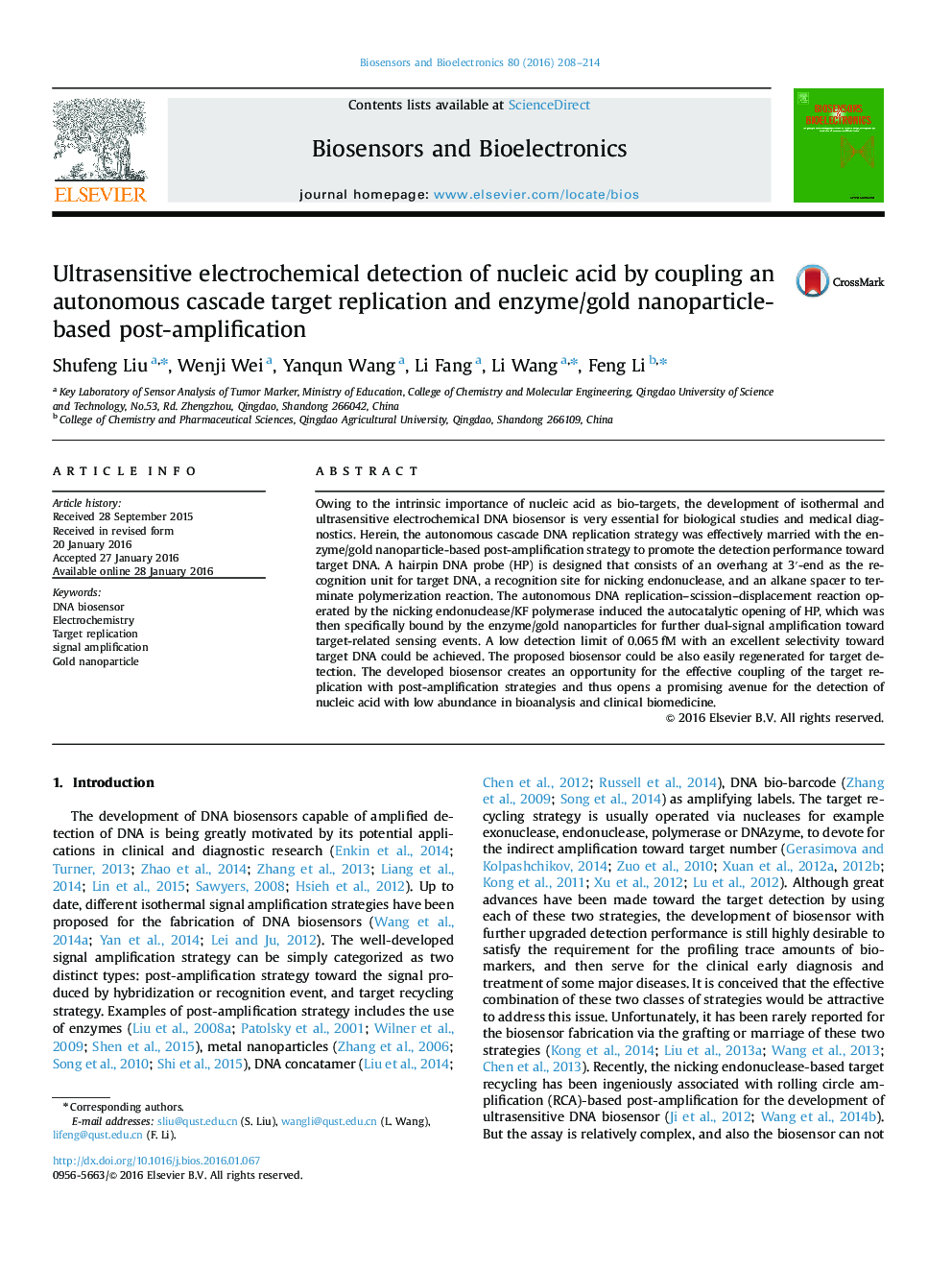| Article ID | Journal | Published Year | Pages | File Type |
|---|---|---|---|---|
| 7230722 | Biosensors and Bioelectronics | 2016 | 7 Pages |
Abstract
Owing to the intrinsic importance of nucleic acid as bio-targets, the development of isothermal and ultrasensitive electrochemical DNA biosensor is very essential for biological studies and medical diagnostics. Herein, the autonomous cascade DNA replication strategy was effectively married with the enzyme/gold nanoparticle-based post-amplification strategy to promote the detection performance toward target DNA. A hairpin DNA probe (HP) is designed that consists of an overhang at 3â²-end as the recognition unit for target DNA, a recognition site for nicking endonuclease, and an alkane spacer to terminate polymerization reaction. The autonomous DNA replication-scission-displacement reaction operated by the nicking endonuclease/KF polymerase induced the autocatalytic opening of HP, which was then specifically bound by the enzyme/gold nanoparticles for further dual-signal amplification toward target-related sensing events. A low detection limit of 0.065Â fM with an excellent selectivity toward target DNA could be achieved. The proposed biosensor could be also easily regenerated for target detection. The developed biosensor creates an opportunity for the effective coupling of the target replication with post-amplification strategies and thus opens a promising avenue for the detection of nucleic acid with low abundance in bioanalysis and clinical biomedicine.
Related Topics
Physical Sciences and Engineering
Chemistry
Analytical Chemistry
Authors
Shufeng Liu, Wenji Wei, Yanqun Wang, Li Fang, Li Wang, Feng Li,
